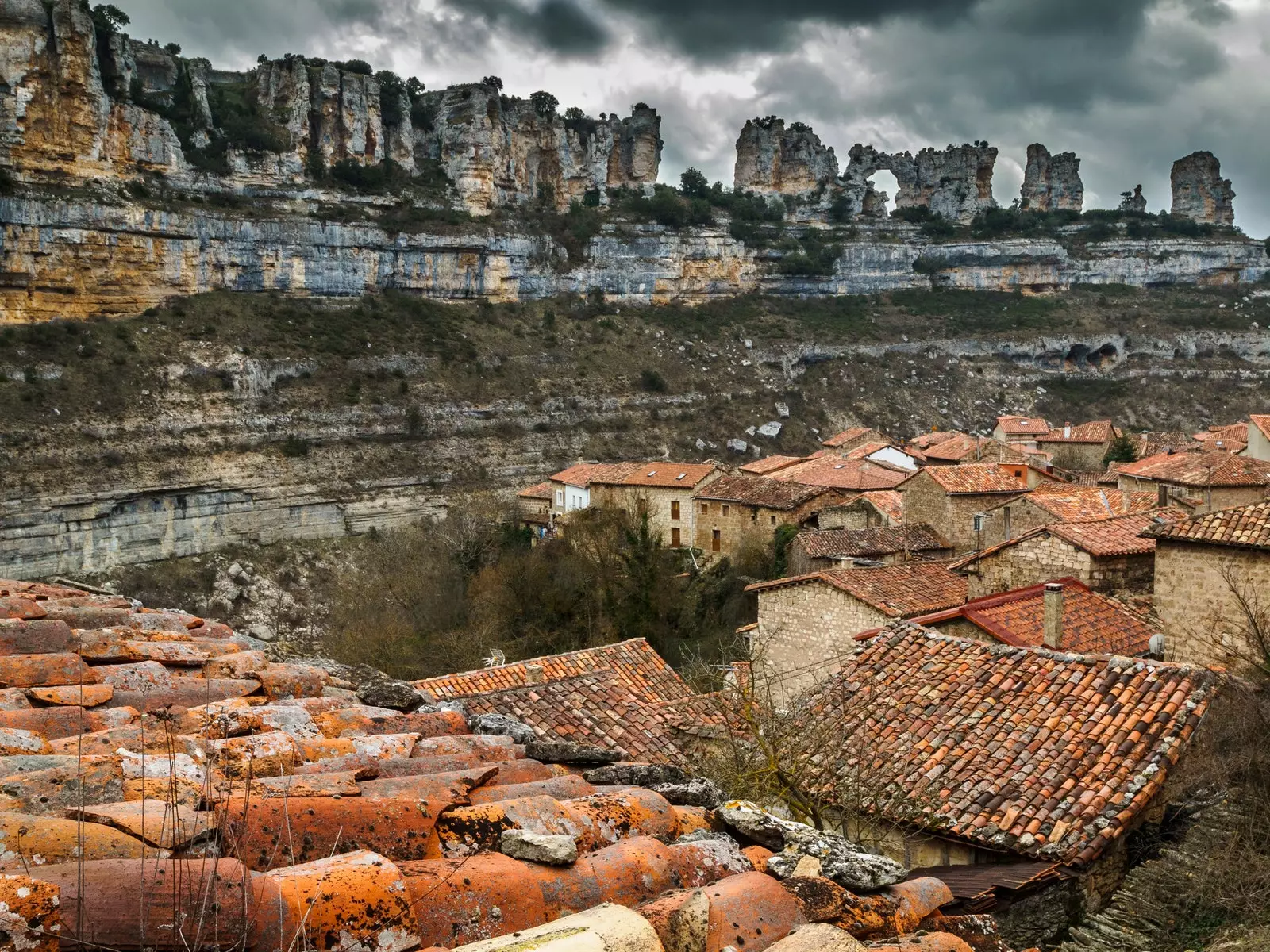
Orbaneja del Castillo, where the spectacular rocks frame the roofs of this Burgos town.
Most of the rivers of our country share a very similar vital cycle: born between great mountains that feed them with the maternal nectar of their snows and streams, spend a pleasant childhood through valleys predisposed for their sideways, as if nature wanted to give newborn rivers a peaceful childhood before subjecting them to its own harshness.
Adolescence will arrive when, in its incessant search of the sea, find before them massifs of rock never before broken where they themselves must make their way.
Later will come the calm, the wide meanders that denote maturity and sanity, with occasional fits of anger in the form of floods, until he died pleasantly on the seashore. A life so human that connects us with the rivers as if they were part of our little family.
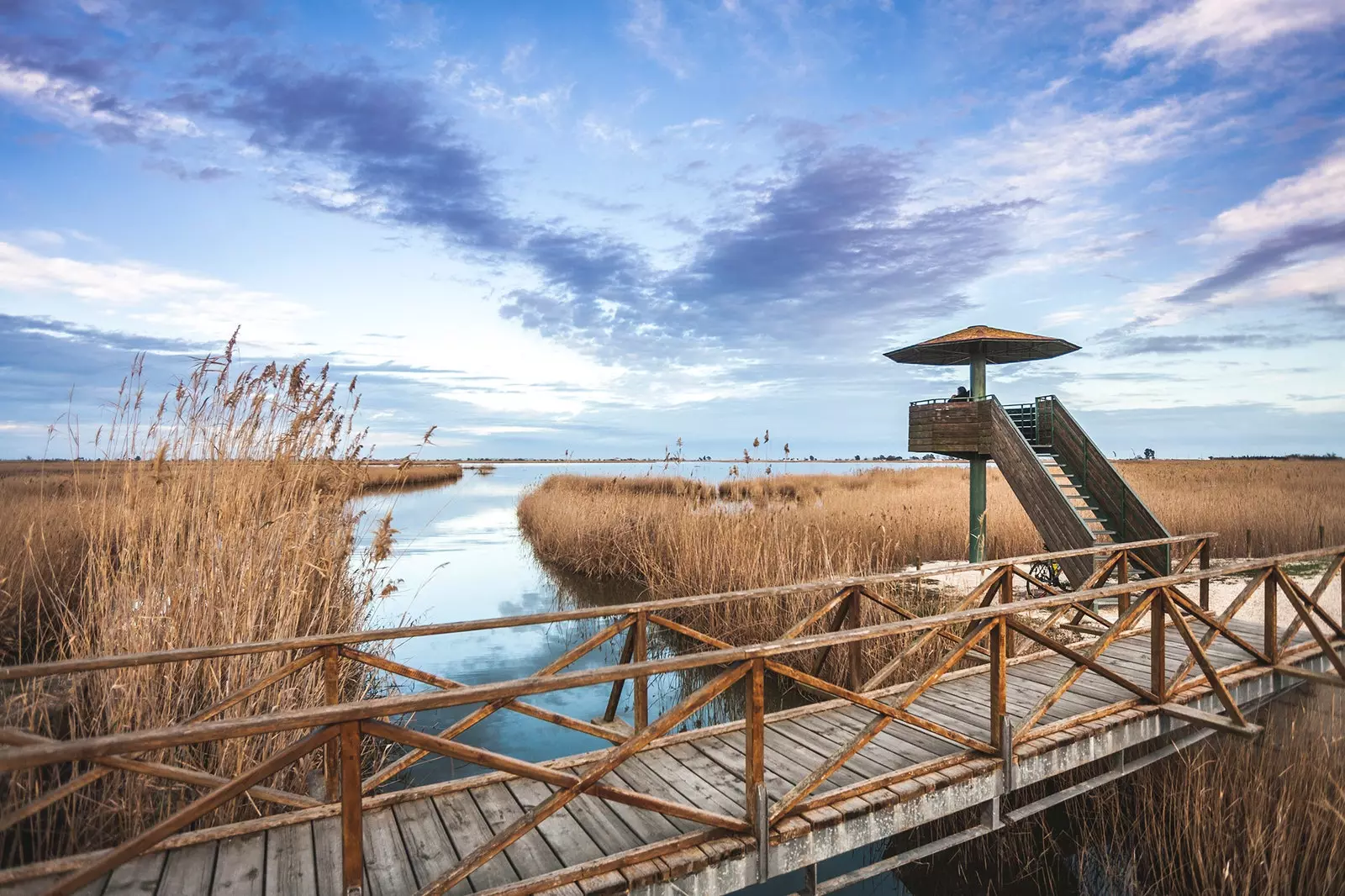
Delta del Ebro, where the river dies pleasantly on the shores of the sea.
“The Ebro rises in Fontibre and flows into Tortosa”, says a Campurrian song, to which the Aragonese jota responds: “The Ebro is born in Fontibre, and becomes male in Aragón, and when we arrive in Catalonia he makes us boastful”.
Both letters ignore that as soon as the river is born in the heights of Campoo, just turned into an infant after bathing Reinosa and strolling through the Valderredible valley, he must face the greatest feat of his entire fluvial life: make their way through the limestone mountains that separate it from the Nela and Jerea rivers, without whose waters and breath it would be impossible to face the long road to the Mediterranean.
As soon as we enter the Ebro canyon, we will begin to see over our heads large flocks of griffon vultures that inhabit the red stone needles that frame the tops of the cliffs. The vertical walls are the result of the work of the river for millions of years, pierced by thousands of caves inhabited by a large birdlife.
Humans also occupied this place since prehistory, attracted by the presence of water and game in its riparian forests, as well as by the protection offered by the canyon from the moorlands that stretch out on the highlands.
The potion seemed perfect: water, shelter and food give rise to human lives, and along the river, even beyond its gorges, communities began to sprout that soon knew how to look for the places where the liquid element ran night and day, embracing them and protecting them against dangers: they are the 'Water Towns' of the Ebro.
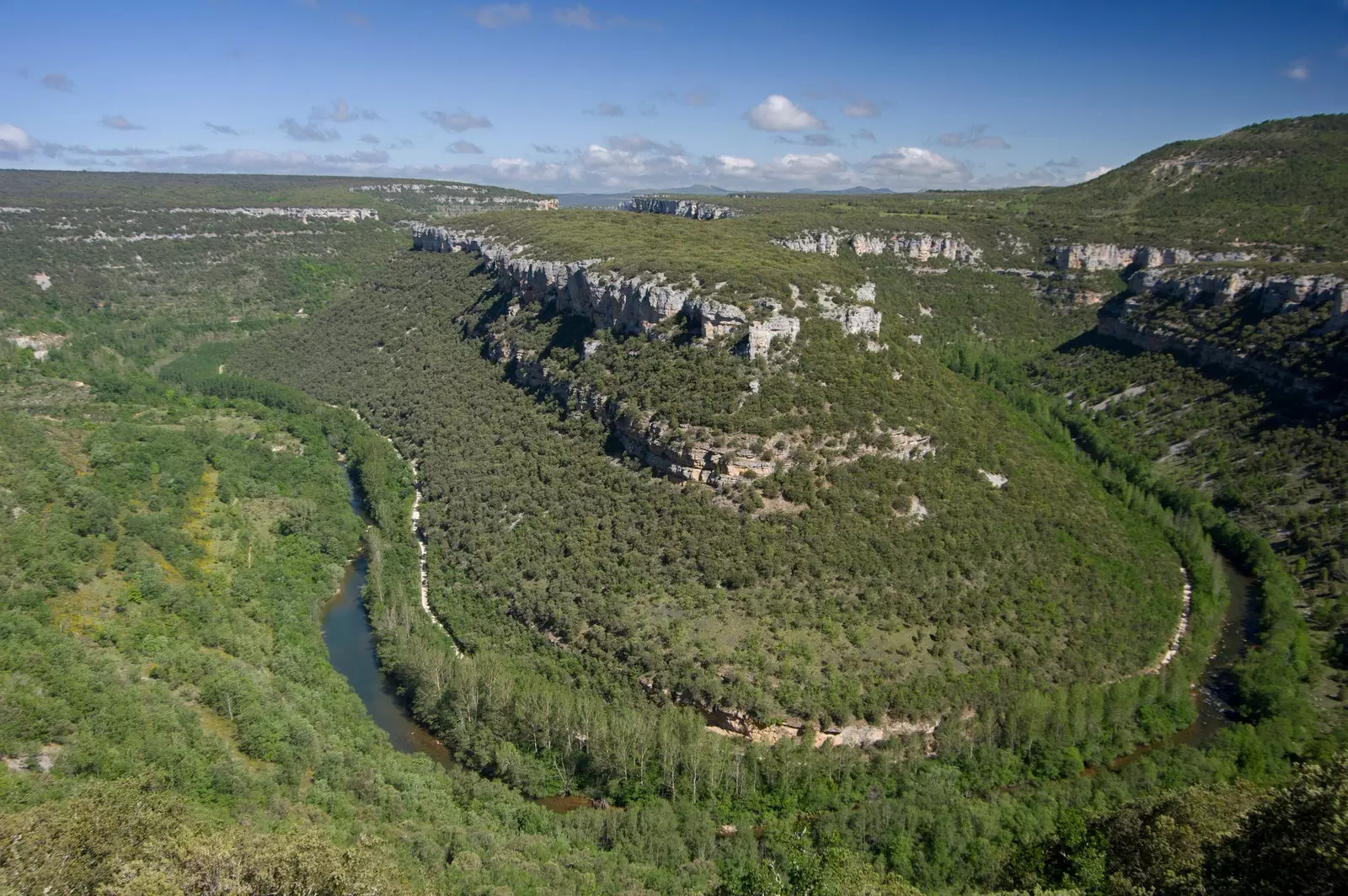
Meander of the Ebro river near the town of Valdelateja.
ORBANEJA OF THE CASTLE
Orbaneja del Castillo (Burgos, Castilla y León) is located a few kilometers from the west mouth of the canyon, surrounded by forests of oak, holm oak and birch. Its enviable position, on a stepped hill leaning against the ocher walls of the canyon, it was used by the first settlers in the area, the Berbers, who sought quiet and isolated places where to remain protected from the Arab and Christian riots.
They found a gigantic waterfall, fed by a thousand streams that gave rise to small terraces and by the great current that flows from the so-called Cueva del Agua. The waterfall is really a tuff, and a tuff is one of those little miracles of nature. for which the 'Water Towns' arose.**
The process of creating a tuff is not easy: the rainwater that falls on the moors that surround the canyon, poor in CO2 and minerals, fills with acids as it passes through the ground. Since the rock it encounters is limestone, and calcareous rocks are easily dissolved by water, this makes its way charging in turn with the carbonate snatched from the limestone itself. Going outside, it is the ecological conditions that mark the next step.
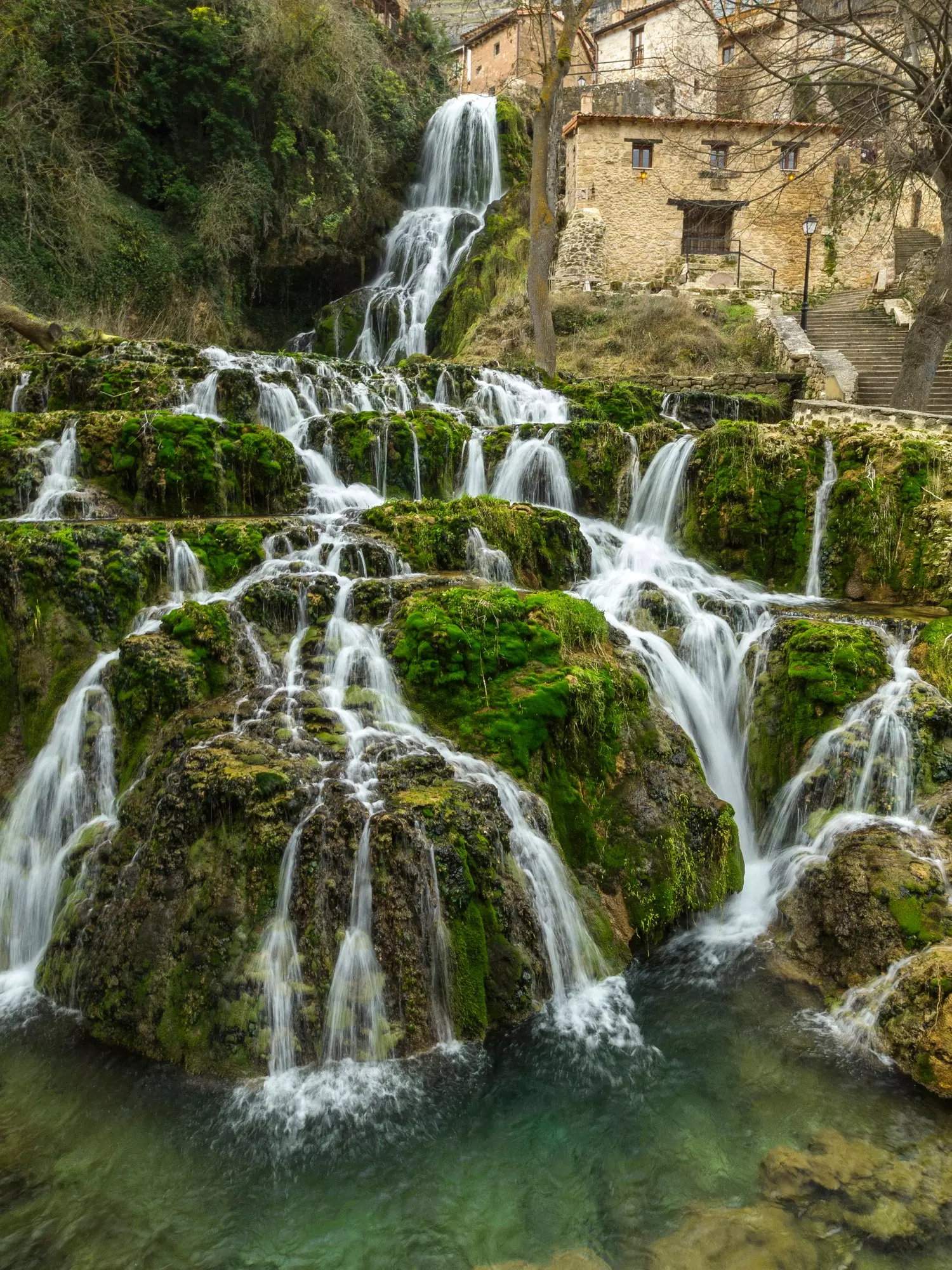
Waterfall of Orbaneja del Castillo, in Burgos.
In the case of Orbaneja, the stream of water from the subsoil emerges in the Cueva del Agua, depositing its excessive load of carbonates in what are now the orchards, gardens and natural pools of the town.
What happens when we pour water with sand on our castle on the beach? The same thing that happened in the Orbaneja tuff for millions of years to form the landscape that humans found.
Today Orbaneja is a must for the beauty of its tufa, the landscape offered by the canyon, and its well-preserved rural hamlet. Have a beer on the terrace of El Arroyo (El Caño, 4) listening to the flow of the stream while our sight is lost in the capricious forms of the Ebro canyon, it is something that deserves the end of a quarantine.
WATER TUBE
However, the popularity of Orbaneja invites you to look for 'Pueblos de Agua' away from the crowds (increasingly less recommended), such as the nearby Tubilla del Agua (Burgos, Castilla y León), whose name indicates its origin in a new tuff, if possible, even more beautiful than its neighbor in Orbaneja.
There is no more natural name than that of this town, nor a story more linked to water than that of Tubilla: on the heights of its tuff rise the church and the medieval farmhouse, watching over the waters that form small bluish and transparent puddles that irrigate the orchard of the urban nucleus.
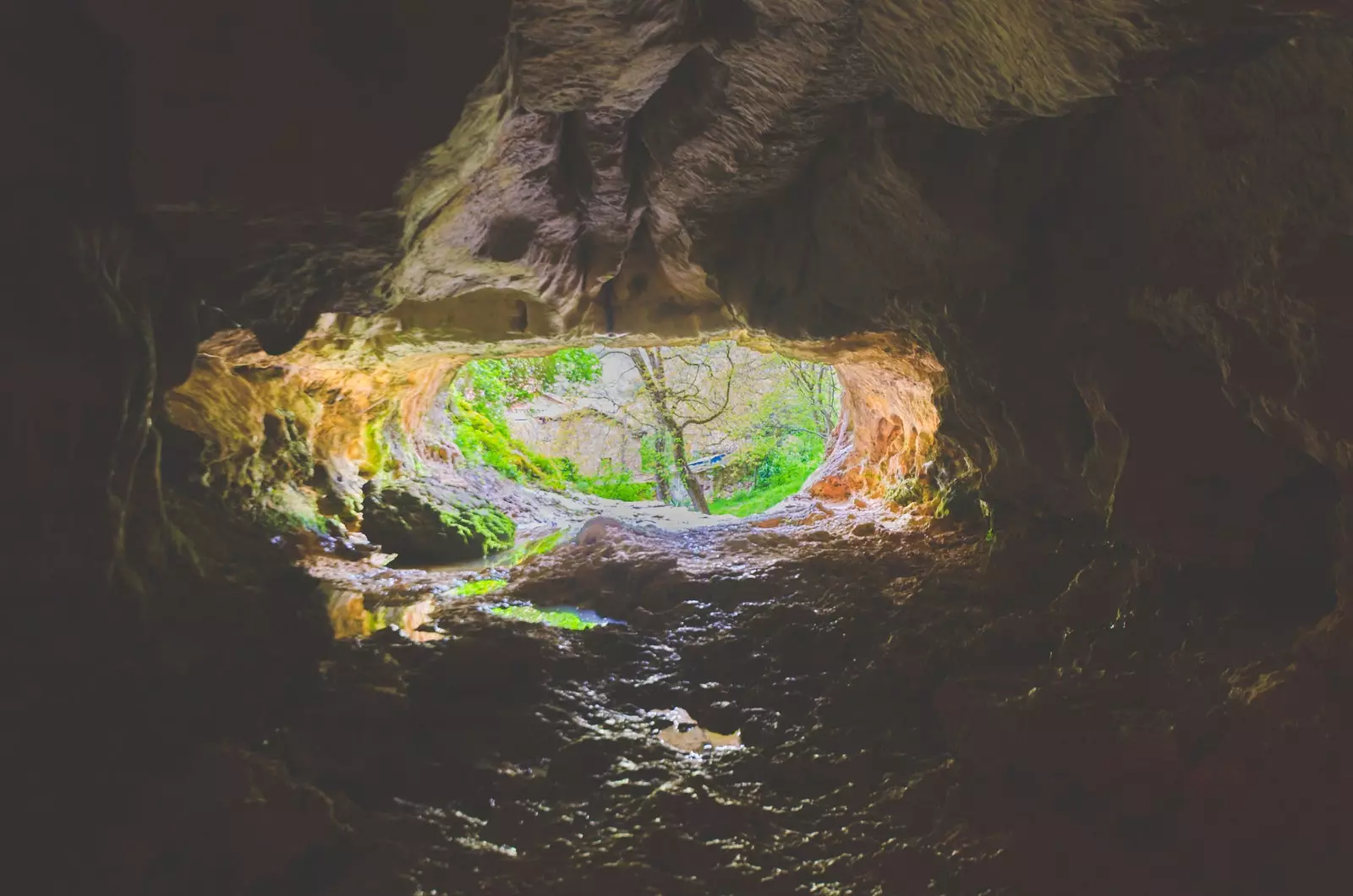
Cave formed millions of years ago in Orbaneja del Castillo, Burgos.
The valley is a small Castilian orchard that, like the set of the gorges of the Ebro and the river Rudron, It was used from the beginning of human history to feed numerous Neolithic communities that left behind the numerous dolmens that dot the Páramo de La Lora.
During the Roman antiquity, on the other hand, were isolated and poorly communicated places with the cities of the plateau and the Ebro valley, and suffered the costs of a progressive depopulation accentuated by the arrival of the Muslims in the year 711.
I have already talked about the Berbers who found their place of refuge in Orbaneja, but also the Christians, coming from the humid Asturias and Cantabria, they knew how to appreciate the advantages conferred by founding 'Pueblos de Agua'.
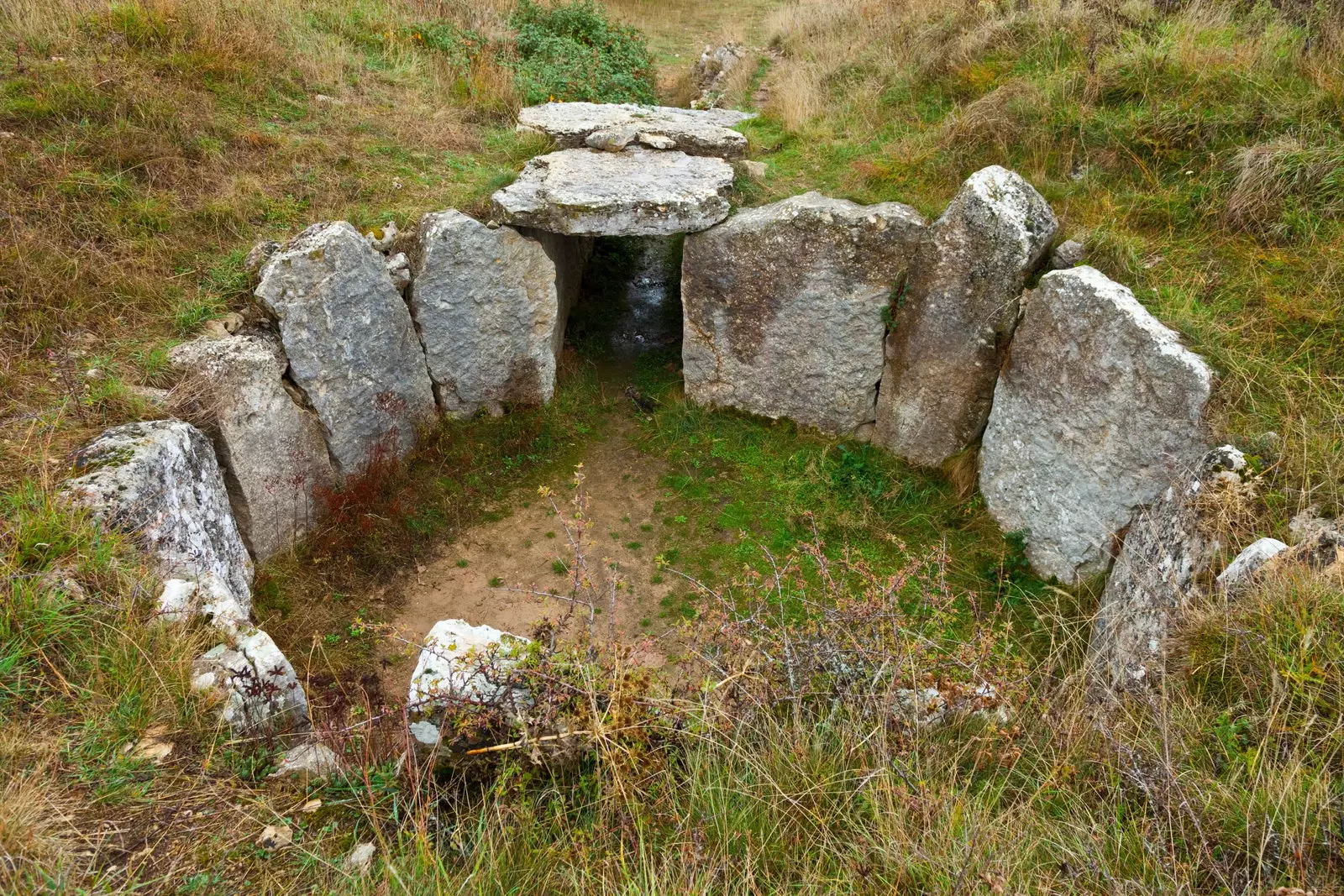
Dolmen of El Moreco (3,200 BC), in Hoya de Huidobro, Burgos.
BRIDGE DEY
A notable example is found when the people arrived at Puentedey (Burgos, Castilla y León), place name derived from Puente de Dios, for only by going to the divine could Christians explain that work. The river Nela excavates a huge arch on whose keystone the farmhouse was installed, whose architecture preserves the medieval traces that dignify the Romanesque churches in the area.
Worth stop, following the Nela towards the Ebro, in the church of San Andrés de Escanduso, the smallest of the Romanesque temples on our peninsula, and which keeps a secret in its interior in the form of small pre-Romanesque windows that bring art historians crazy.
Very close, is the neighbor town of Escaño, always attached to the Nela, where the oldest Romanesque church in Burgos is located: San Salvador de Escaño. The little ecclesiastical aspect of its factory should not surprise you: the year 1088 of its foundation was such an insecure time that Christians built their churches like castles to be able to take refuge in them in case of danger.
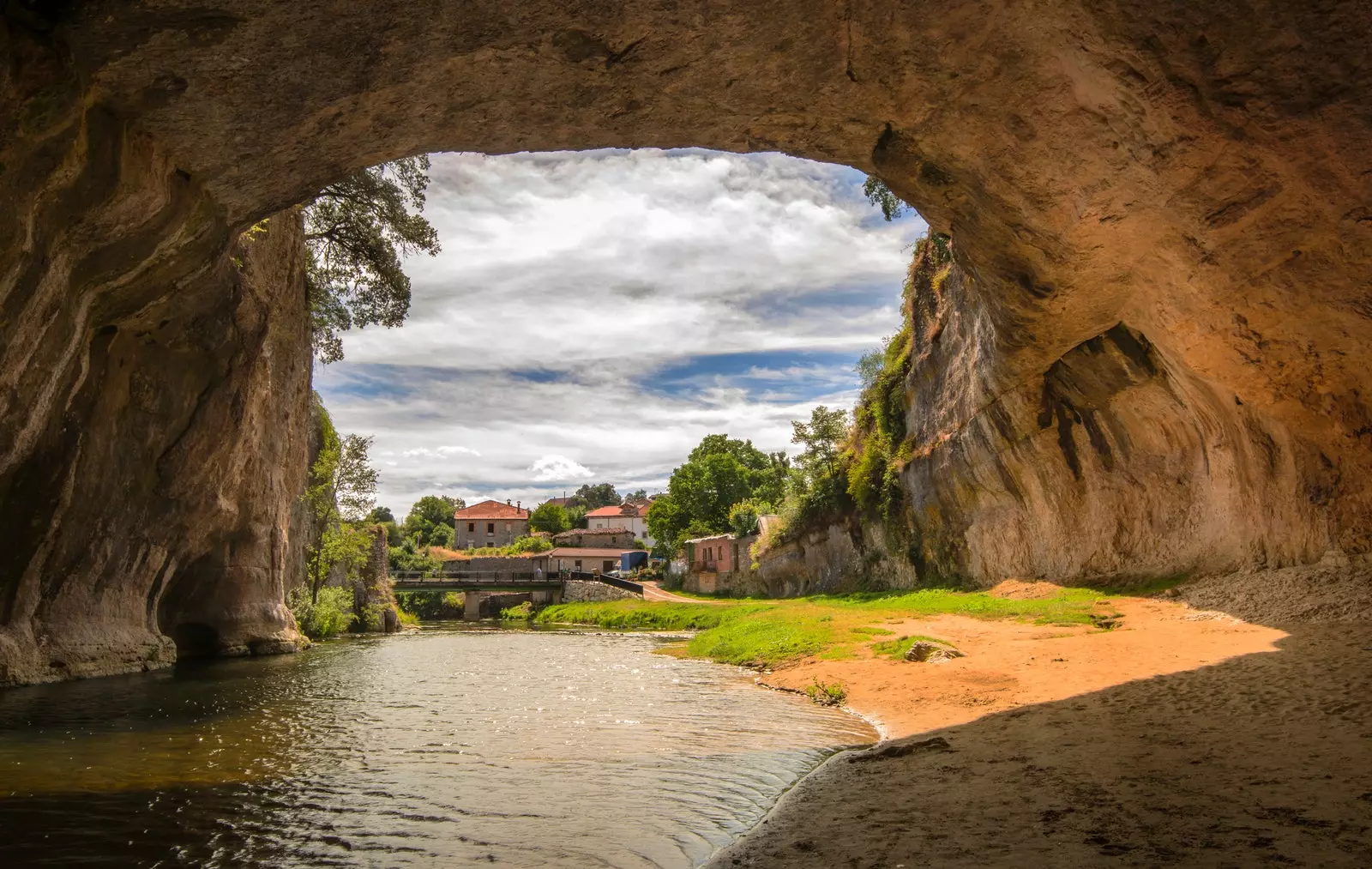
Under the natural rock bridge of the Puentedey town, Burgos.
COLD
Frías (Burgos, Castilla y León) was born precisely in this time of anxiety. Its success is due to the fact that its inhabitants looked for the one that is surely the most inaccessible rock in the region, where the castle looks worthy of a postcard that we can admire today.
The link between water and Frías is evident when admiring the medieval bridge that crosses an already mature Ebro after having managed to overcome the limestone of the Merindades, a place of toll and pontazgo that indicated the importance of crossing the river during the centuries in which everything was done on foot.
The wealth of Frías not only comes from the Ebro, but also from the river that borders it on its southwest bank, the Molinar river. Its name already gives us clues about what marked its shores for centuries: dozens of flour mills that turned Castilian wheat into 'white gold'.
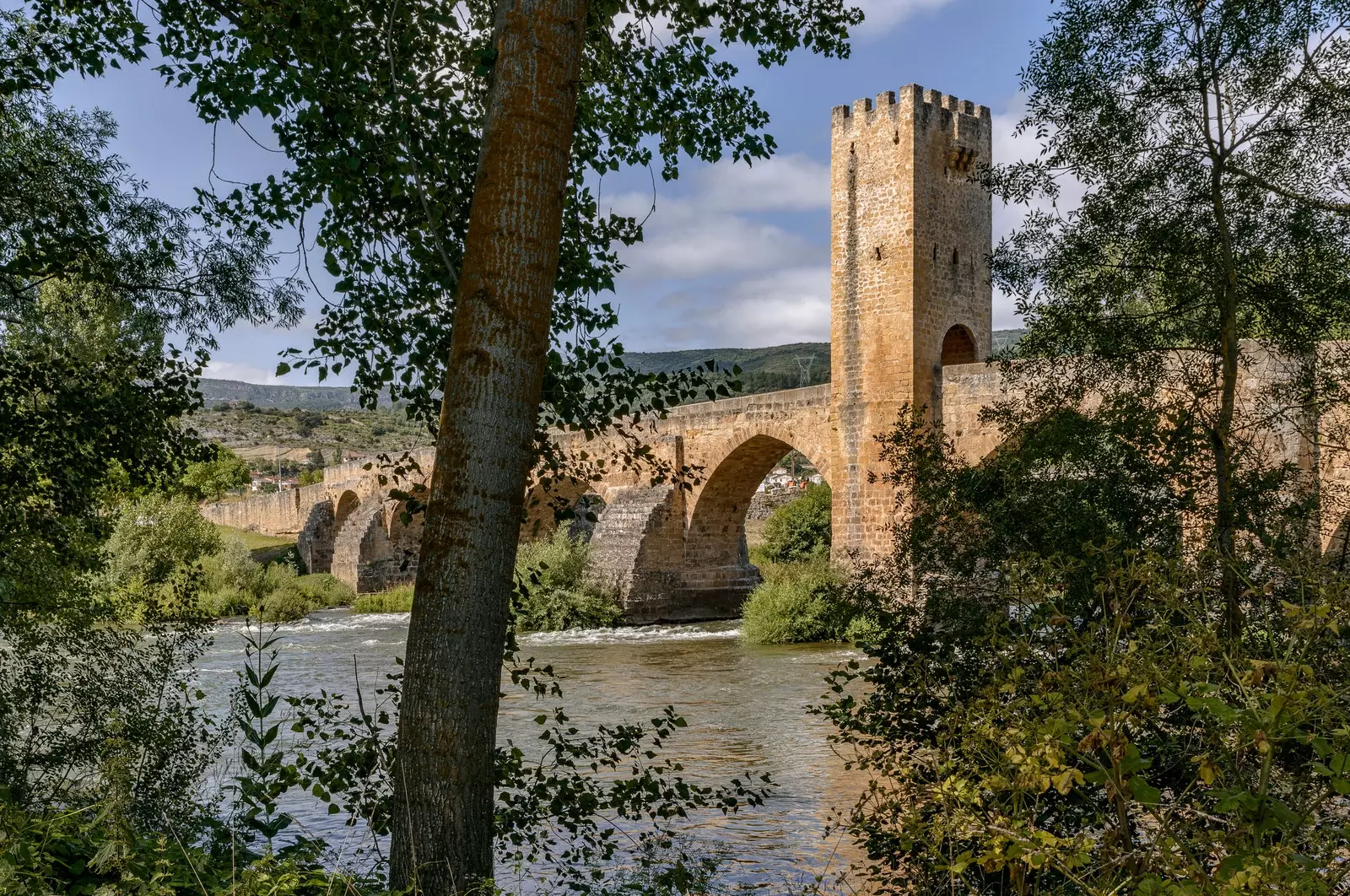
Medieval bridge of the town of Frías.
The route of the Frías mills begins and ends in Tobera, and finding ourselves at the end of an article dedicated to the tuffs and the art of water, little more should be noted about the name than the beauty of its waterfall, wide as a horse's tail, whose flow depends enormously on the season of the year.
Aware of the gifts that water provides without asking for anything in return, the Castilians they built the hermitage of the Virgen de la Hoz very close to the Tobera waterfall, Gothic factory built with the rock of the tufa on which it sits.
The most proper thing would be to leave the place and this article through a bridge, a symbol of union and option for those who prefer to walk 'between two waters', and in front of the hermitage of the Virgen de la Hoz is the one who thousands, millions of steps have taken the way to Santiago de Compostela. Its medieval arch will be waiting when we leave, as will the 'Water Towns' of the Ebro: for them, formed through millennia of flow, this rest has only been a sigh.
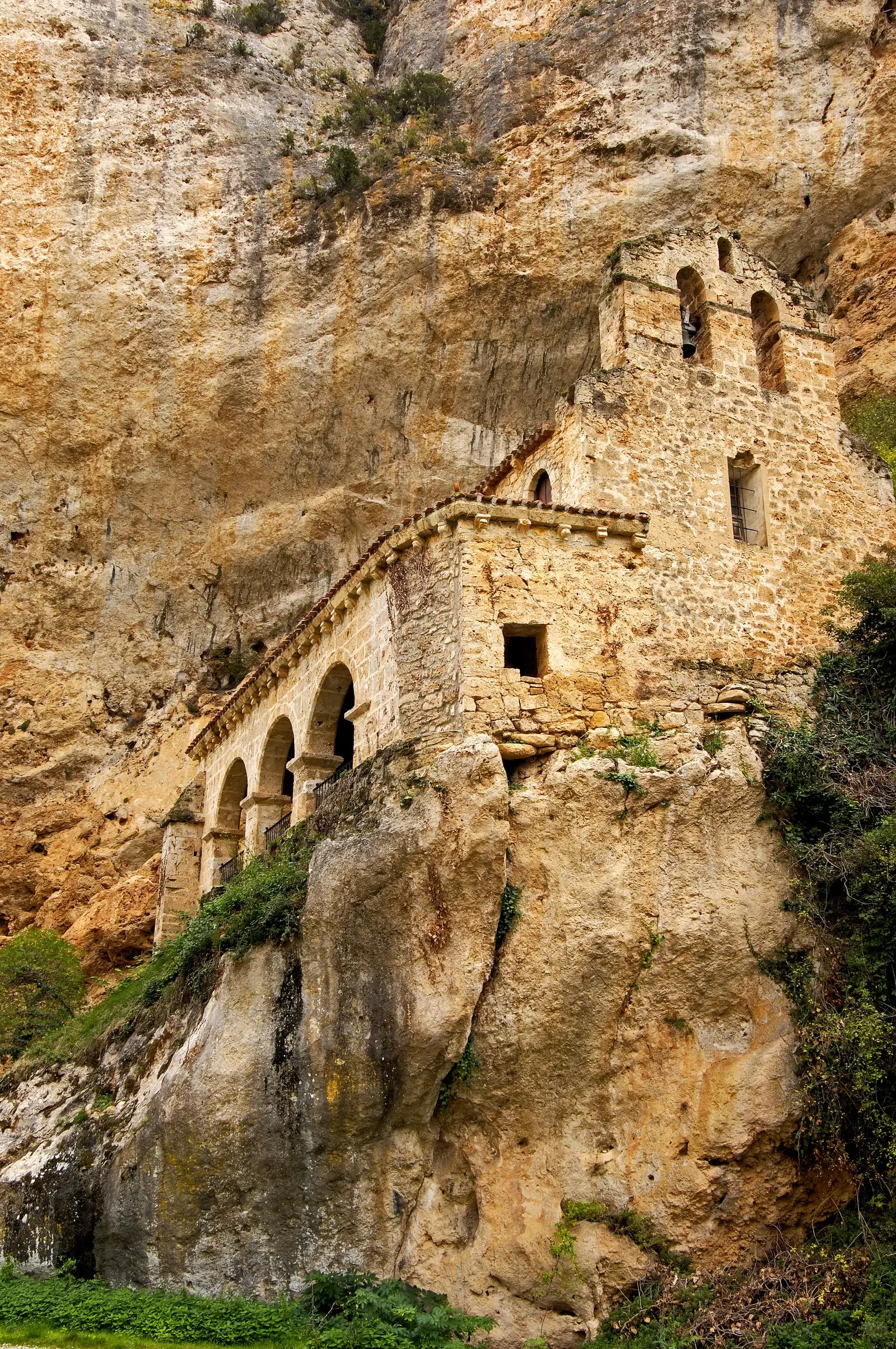
Hermitage of the Virgen de la Hoz, in Tobera (Burgos).
